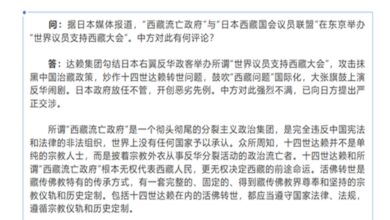US and China Relations in the second quarter of 21st century: Prospects and Future Projections

Since Modern China was established in 1949 under the leadership CPC and Mao Zedong, US – China Relations have undergone many changes triggered by social, political and economic circumstances in both countries. Some of the obstacles, challenges and major historical events experienced in the course of US China relations include the Korean War in 1950, the First Taiwan Strait Crisis in 1954, the Tibetan Uprising in 1959, China’s First Atomic Test in 1969, the Sino-Soviet Border Conflict in 1969, Ping-Pong Diplomacy in 1971, Nixon’s Visit to China in 1972, the establishment of formal ties with the US and the One China Policy in 1979, China vis a vis Reagan’s neoliberal era begun in 1982, the Belgrade Chinese Embassy Bombing by USA in 1999, normalizing trade relations between the US and China in 2000, the U.S.-Sino Spy Plane Standoff in 2001, initiations of a strategic dialogue with China as “Responsible Stakeholder,” China becoming the largest U.S. foreign creditor in 2008, China ranked as the world’s second-largest economy in 2010, the U.S. ‘pivot’ toward Asia initiated by Hillary Clinton in 2010, rising trade tensions under the Obama administration in 2012, China’s emerging domestic leadership in 2012, Sunnylands’ Summit with Barack Obama in 2013, the Joint Climate Announcement in 2014, U.S. warning China over the South China Sea in 2015, Trump hosting Xi at Mar-a-Lago in 2017 and Trump’s tariffs targeting China spurring the escalation of a U.S.- China trade war, Pence’s speech signaling a hardline approach to trade and China policy at the Hudson Institute in 2018, Canada arresting a Huawei Executive in 2018 resulting in Huawei suing the United States, intensification of the trade war in 2019.
From our perspective, US – China relations are not different than US relations with other countries in terms of US National Security Interests. However, China is a unique case due to its own demographics; more than 1.4 billion people, including 350 to 450 million strong middle class, combined with its rapid urbanization, dynamic economy, advanced levels of industrialization and modernization, transformation of its gender relations, new educational system under President Xi Jinping, and Chinese investments in Africa, Latin America, Middle East, South East Asia, Europe and the USA. China offers an example of one of the most important and large scale social, political and economic modernizations in human history. US and China relations between 1979 to 2008 have been somehow stable in comparison to other time periods, however, over the last few years, what we call the China Studies Industry has become more powerful inside the beltway and has dominated US- China relations. As a result, there have been new Trade Wars, US support for Xinjiang, Tibet, Hong Kong and Taiwan, escalation of the conflict in the South China sea and many others that will follow.
This “New Cold War” will not benefit anyone, but drains the resources from both the US and Chinese education and healthcare system, diverting resources that would be put towards infrastructure projects, alleviating poverty, and so on. Furthermore, US economic problems are not related with China! Outsourcing American jobs from Ohio or Iowa are directly related with the neoliberal policies. We should also remember what happened to the GM factory in Flint, Michigan. On the other hand, China is not a perfect place…. Both countries have significant obstacles and challenges. Both are currently facing similar issues with terrorism, creating jobs for their citizens, building infrastructure, updating educational system and enabling the diversity of their own citizens. Therefore, global governance and collaboration is very important to US-China Relations.
What are the pillars of US foreign Policy and Critique
- Promotion of Democracy and Human Rights
- Economic Prosperity and Free Trade 3. National Security
- International Law and Institutions
- Multilateralism and Alliances
- Environmental Sustainability
- Humanitarian Assistance
Overall Critique and Analysis
What are the pillars of Chinese Foreign Policy and Critique:
- Sovereignty and Territorial Integrity
- Non-Interference in Internal Affairs
- Economic Development and Trade
- Multilateralism and Global Governance
- Peaceful Development and Win-Win Cooperation
- Cultural Diplomacy and Soft Power
Overall Critique and Analysis
Cooperation, Conflict and Challenges
- Economic Interdependence and Competition
- Technological Rivalry
- Geopolitical Influence
- Military and Security Dynamics
- Multilateralism and Alliances
- Human Rights and Ideological Differences
- Domestic Political Dynamics
- Climate Change and Environmental Cooperation
Conclusion
What are the Pillars of US Foreign Policy and Critique
The pillars of U.S. foreign policy have evolved over time, but generally, they can be distilled into several key principles. These pillars guide the United States in its interactions with other nations and international organizations. Here are the primary pillars, along with some critiques:
- Promotion of Democracy and Human Rights
- Principle: The U.S. aims to support democratic institutions and human rights around the world, believing that democratic nations are more likely to be peaceful and prosperous.
- Critique: Critics argue that the U.S. sometimes prioritizes strategic interests over democratic values, supporting authoritarian regimes when convenient. Inconsistencies in policy application can undermine credibility.
- Economic Prosperity and Free Trade
- Principle: Promoting global economic growth and maintaining open markets is crucial for U.S. prosperity. This involves advocating for free trade agreements and economic partnerships.
- Critique: Free trade policies can lead to job losses in certain domestic industries and exacerbate income inequality. Critics also point out that economic policies sometimes favor large corporations at the expense of local communities and environmental standards.
- National Security
- Principle: Ensuring the security of the United States and its allies is a top priority. This involves military alliances (e.g., NATO), counterterrorism efforts, and maintaining a strong defense posture.
- Critique: National security strategies have sometimes led to prolonged military engagements and interventions (e.g., Iraq, Afghanistan) with high human and financial costs. Critics argue these interventions can destabilize regions and lead to antiAmerican sentiment.
- International Law and Institutions
- Principle: Supporting a rules-based international order through organizations like the United Nations, World Trade Organization, and International Monetary Fund.
- Critique: Critics claim the U.S. can be selective in its adherence to international law, ignoring it when convenient (e.g., Guantanamo Bay, drone strikes). There are also accusations of undermining international institutions when they do not align with U.S. interests.
- Multilateralism and Alliances
- Principle: Building and maintaining alliances and partnerships around the world to address global challenges collectively.
- Critique: Multilateral approaches can sometimes be seen as compromising national sovereignty. Additionally, allies may not always share U.S. priorities, leading to conflicts or ineffective cooperation.
- Environmental Sustainability
- Principle: Addressing global environmental challenges, such as climate change, through international cooperation and agreements (e.g., Paris Agreement).
- Critique: The U.S. has faced criticism for inconsistent commitment to environmental agreements, influenced by domestic political changes. This inconsistency can hinder global efforts to address climate change.
- Humanitarian Assistance
- Principle: Providing aid to countries in crisis, including disaster relief, development aid, and support for refugees.
- Critique: Humanitarian aid is sometimes criticized for being tied to political objectives rather than purely altruistic motives. Additionally, aid effectiveness can be questioned due to issues like corruption and mismanagement in recipient countries.
Overall Critique and Analysis
Critics argue that U.S. foreign policy can be overly interventionist and inconsistent, sometimes driven more by economic and strategic interests than by the principles it publicly espouses. Additionally, there are concerns about the impact of U.S. actions on global stability and the perception of the U.S. as a global hegemon imposing its will on other nations. Balancing national interests with global responsibilities remains a challenging aspect of U.S. foreign policy.
What are the Pillars of Chinese Foreign Policy and Critique
Chinese foreign policy is shaped by a combination of historical experiences, domestic priorities, and strategic objectives. The key pillars of Chinese foreign policy, along with associated critiques, are as follows:
1.Sovereignty and Territorial Integrity
- Principle: China emphasizes the importance of national sovereignty and territorial integrity, asserting its claims over areas such as Taiwan, the South China Sea, and the Senkaku/Diaoyu Islands.
- Critique: Critics argue that China’s assertive stance on territorial issues can lead to regional tensions and conflicts. The aggressive approach in the South China Sea, including the construction of artificial islands, has been particularly controversial and has strained relations with neighboring countries.
2.Non-Interference in Internal Affairs
- Principle: China advocates for non-interference in the internal affairs of other countries, emphasizing mutual respect and equality among nations.
- Critique: This principle is often seen as a way for China to shield itself and its allies from international criticism regarding human rights abuses and authoritarian practices. Critics also point out that China’s economic and political influence can indirectly affect the internal affairs of other nations, contradicting its stated policy.
- Economic Development and Trade
- Principle: Promoting economic development through trade, investment, and infrastructure projects, epitomized by initiatives like the Belt and Road Initiative (BRI).
- Critique: While the BRI has brought significant infrastructure investments to many countries, critics argue that it can lead to debt dependency and increase China’s geopolitical influence. There are also concerns about environmental impacts and the lack of transparency and sustainability in some projects.
- Multilateralism and Global Governance
- Principle: China supports a multipolar world and seeks to play a significant role in international institutions like the United Nations, World Trade Organization, and BRICS.
- Critique: Critics assert that China’s engagement in multilateral organizations is often driven by its desire to reshape global governance to better align with its interests. There are concerns about China’s commitment to international norms and standards, particularly in areas such as trade, human rights, and cybersecurity.
- Peaceful Development and Win-Win Cooperation
- Principle: China promotes the concept of peaceful development and win-win cooperation, emphasizing mutually beneficial economic and political relationships.
- Critique: Skeptics argue that China’s actions do not always match its rhetoric. Examples include the militarization of the South China Sea, coercive economic practices, and strategic investments that enhance China’s geopolitical influence at the expense of host countries’ sovereignty.
- Cultural Diplomacy and Soft Power
- Principle: China seeks to enhance its soft power through cultural exchanges, education programs, and media influence, promoting Chinese culture and values abroad.
- Critique: Critics contend that China’s soft power initiatives, such as Confucius Institutes, often serve as tools for propaganda and influence, suppressing critical views and promoting a favorable image of the Chinese government. There are also concerns about academic freedom and freedom of expression.
Overall Critique
China’s foreign policy is often criticized for being opaque and driven by a blend of pragmatism and strategic ambition. While it emphasizes principles like non-interference and win-win cooperation, its actions in practice, particularly regarding territorial disputes and economic leverage, can be perceived as contradictory to these principles. Additionally, China’s growing global influence and its efforts to reshape international norms and institutions to align with its interests raise concerns about the future balance of power and the maintenance of a rules-based international order.
Cooperation, Conflict and Challenges
The relationship between the United States and China in the second quarter of the 21st century is one of the most critical and complex bilateral dynamics shaping global politics, economics, and security. Here are some key prospects and future projections:
- Economic Interdependence and Competition
- Prospects: The U.S. and China are deeply intertwined economically, with significant trade, investment, and supply chain linkages. Despite trade tensions and competition, both economies benefit from this interdependence.
- Projections: Economic competition will likely intensify, particularly in high-tech sectors like AI, semiconductors, and green technology. The U.S. may continue efforts to decouple critical industries from China, while China will seek to reduce reliance on U.S. technology.
- Technological Rivalry
- Prospects: Technological superiority is a key battleground. Both nations are investing heavily in innovation, R&D, and securing intellectual property.
- Projections: The rivalry will drive advancements but also lead to parallel technological ecosystems, especially in areas like 5G, AI, and quantum computing. Cybersecurity concerns and espionage will remain contentious issues.
- Geopolitical Influence
- Prospects: Both countries aim to expand their global influence. China’s Belt and Road Initiative and increasing presence in international organizations contrast with the U.S. strategy of strengthening alliances and partnerships, particularly in the Indo-Pacific.
- Projections: The geopolitical landscape will be marked by strategic competition, with flashpoints in the South China Sea, Taiwan, and through alliances like the Quad. Both nations will vie for influence in developing regions, including Africa and Latin America.
- Military and Security Dynamics
- Prospects: The military capabilities of both nations are expanding. The U.S. maintains a global military presence, while China is modernizing its forces and expanding its reach.
- Projections: Increased military presence and activity, particularly in the Indo-Pacific, will heighten tensions. There is potential for incidents or conflicts, especially around Taiwan and the South China Sea, though both nations will likely seek to avoid direct confrontation.
- Global Governance and Multilateralism
- Prospects: Both countries aim to shape global governance but often have divergent visions. China seeks to increase its role in international organizations, while the U.S. advocates for a rules-based order reflecting democratic values.
- Projections: Tensions will persist in multilateral institutions, with competition over leadership and influence. Climate change, global health, and trade will be critical areas of both cooperation and conflict.
- Human Rights and Ideological Differences
- Prospects: Human rights remain a significant point of contention, with the U.S. criticizing China’s policies in Xinjiang, Hong Kong, and its treatment of dissidents.
- Projections: Ideological differences will continue to strain relations. Human rights issues will be a persistent challenge, impacting diplomatic engagements and international perceptions.
- Domestic Political Dynamics
- Prospects: Domestic politics in both countries influence their foreign policies. U.S. policies can shift with administrations, while China’s leadership under the Chinese Communist Party remains stable.
- Projections: Domestic challenges, such as economic stability, social unrest, and political leadership, will affect bilateral relations. Nationalistic policies and public opinion will play significant roles in shaping future interactions.
- Climate Change and Environmental Cooperation
- Prospects: Both countries recognize the importance of addressing climate change and have made commitments under international agreements like the Paris Accord.
- Projections: Climate change offers a platform for cooperation, despite broader tensions. Joint efforts in green technology and emissions reduction could serve as a stabilizing factor in the relationship.
Conclusion
The U.S.-China relationship in the second quarter of the 21st century will be defined by a complex mix of competition and cooperation. Strategic rivalry, particularly in technology and military domains, will intensify, while economic interdependence and global challenges like climate change will necessitate collaboration. Both nations will need to navigate this intricate dynamic carefully to manage conflicts and capitalize on opportunities for mutual benefit and global stability.





